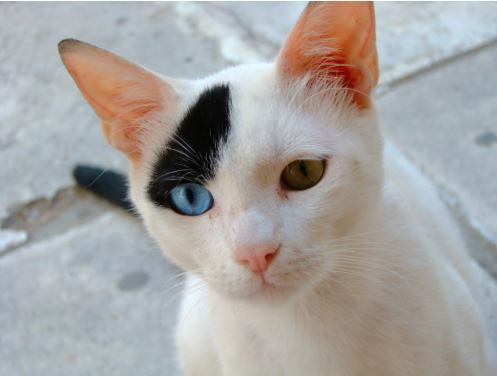 Why do the distinctive piebald patches seen in black and white cats and some horses occur? The predominant hypothesis has been that piebald patterns form on animals' coats because pigment cells move too slowly to reach all parts of the embryo before it is fully formed but a new study found otherwise.
Why do the distinctive piebald patches seen in black and white cats and some horses occur? The predominant hypothesis has been that piebald patterns form on animals' coats because pigment cells move too slowly to reach all parts of the embryo before it is fully formed but a new study found otherwise.
Instead, a study of how pigment cells behave in mice found that they move and multiply randomly during early development rather than follow instructions. There is no complicated cell-to-cell communication to send the cells in a particular direction. If further research takes place, it could shed light on medical conditions that occur early in development, such as holes in the heart, which are caused by cells not moving to the right place as an embryo develops.
Dr Richard Mort, from the University of Edinburgh's Medical Research Council Human Genetics Unit said, ''We already know cells move through the developing skin to create pigment. We have discovered that they move and multiply at random which is not what was expected. Using a mathematical model we were then able to show that this simple process could explain piebald patterns.''
Dr Christian Yates a Mathematical Biologist from the University of Bath, added: "Piebald patterns can be caused by a faulty version of a gene called kit. What we have found is counter intuitive. Previously it was thought that the defective kit gene slowed cells down but instead we've shown that it actually reduces the rate at which they multiply. There are too few pigment cells to populate the whole of the skin and so the animal gets a white belly. In addition to kit, there are many other genes that can create piebald patterns, the mathematical model can explain piebald patterns regardless of the genes involved.''





Comments